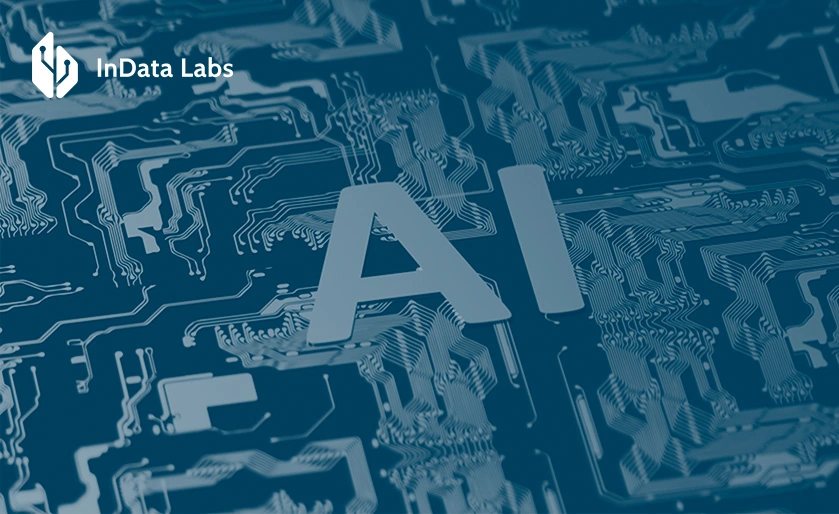Generative AI is rapidly transforming the modern business landscape by offering innovative solutions for automation, personalization, and enhanced decision-making. The ability to generate content, improve predictive analytics, and solve complex problems makes generative AI a game-changer across various industries.
However, achieving the best results requires a solid deployment strategy tailored to the unique needs of each business. A well-executed GenAI deployment can revolutionize industries, but it also presents challenges that must be overcome. In this guide, we explore key strategies for deploying generative AI effectively, addressing both technical and operational hurdles.
Generative AI deployment strategies: Maximizing potential in modern enterprises
Generative AI is reshaping industries by offering cutting-edge solutions for automation, content creation, and decision-making. As this technology becomes more integrated into the business landscape, the challenge lies not just in developing AI models but in deploying them effectively. This article explores the key strategies for generative AI deployment that businesses can leverage to maximize their AI’s potential.

Source: Unsplash
As AI technologies mature, generative AI has become a powerful tool for businesses, enabling them to automate processes, personalize customer experiences, and innovate across various sectors. Yet, successfully deploying generative AI requires an informed strategy, addressing technical requirements, ethical considerations, and integration logistics. This article dives into effective generative AI deployment strategies to unlock the full potential of this transformative technology.
Generative AI is reshaping industries by offering scalable solutions in fields as diverse as healthcare, finance, retail, and manufacturing. In deploying a generative AI strategy, businesses gain tools to enhance productivity, provide targeted services, and make data-driven decisions in real-time.
Case in point: Healthcare and diagnostics
In healthcare, generative AI applications are revolutionizing diagnostics and drug discovery. For instance, by training AI models on vast datasets of medical images, healthcare providers can deploy these models to assist in diagnosing conditions more accurately and swiftly. Companies such as PathAI and Zebra Medical Vision leverage generative AI to interpret imaging data, reducing diagnostic errors and enabling personalized treatments.

Source: Unsplash
Case in point: Retail and E-commerce
Generative AI is also transforming the retail and E-commerce landscape. By analyzing customer data, AI models help businesses predict buying behaviors and preferences, enabling them to create highly personalized shopping experiences. Companies such as Amazon use generative AI to recommend products based on past purchases and browsing history, increasing customer engagement and boosting sales.
Moreover, AI-driven chatbots, like those developed by InData Labs, are enhancing customer service by providing real-time support and recommendations, improving the overall shopping experience.
Case in point: Finance and fraud detection
In the finance sector, generative AI plays a critical role in fraud detection and prevention. Financial institutions deploy generative AI models to analyze transaction patterns, flagging suspicious activities in real time.
AI-powered systems can quickly identify potential fraud cases that would take human analysts much longer to detect. Leading banks, including JPMorgan Chase, leverage AI-driven fraud detection models to safeguard their clients’ assets and enhance security protocols.

Source: Unsplash
Key considerations for deploying generative AI
Deploying generative AI in any industry involves more than just implementing the technology. To ensure successful integration and achieve optimal outcomes, businesses must address several critical factors that influence the effectiveness, scalability, and ethical use of AI systems.
From the technical infrastructure to data privacy concerns and team collaboration to model optimization, here are the key considerations that can make or break your generative AI deployment.
-
Technical infrastructure and scalability
In industries such as healthcare, finance, and telecom, ensuring data privacy and adhering to regulatory standards is crucial. Regulations like GDPR, HIPAA, and CCPA must be followed closely to avoid substantial penalties. Deploying AI systems in a secure manner involves encrypting data, applying strict access controls, and performing regular audits to safeguard sensitive information throughout the entire AI lifecycle. For further insights into secure deployment, check out AI systems security.
-
Cross-functional team collaboration
Effective deployment of generative AI requires collaboration across multiple disciplines. A cohesive team comprising data scientists, machine learning engineers, cybersecurity professionals, and compliance experts ensures that deployment meets both technical and regulatory standards. Partnering with experienced AI service providers can further enhance the process, particularly when working with complex language models in generative AI, or when integrating these models with older systems.

Source: Unsplash
-
Continuous model optimization
To keep AI models performing optimally, businesses need to regularly update and fine-tune them. As new data becomes available, models must be retrained to ensure accuracy and relevance. Monitoring tools offer real-time insights into how a model is functioning, providing opportunities for continuous improvement. This proactive approach to AI model maintenance ensures that the system evolves alongside the business, maintaining alignment with objectives and user expectations. Consistent optimization is key to staying competitive in a fast-changing digital landscape, while also preventing AI from becoming obsolete.
Step-by-step: Deploying generative AI in production
Successfully deploying generative AI in production requires a structured, step-by-step approach. Whether you are working with language models, image generators, or other AI applications, each phase must be carefully planned and executed to ensure that the deployment aligns with business objectives, complies with regulations, and delivers reliable results.
Below is a detailed roadmap outlining the key steps for a smooth and effective generative AI deployment.
Step 1: Define use cases and objectives
Establishing clear use cases and objectives is fundamental when implementing a generative AI business strategy. The deployment’s success depends on tailoring AI applications to meet the distinct needs of each industry or organization. Since every sector has unique challenges, it’s essential to fine-tune generative AI models accordingly.
For example, in the financial industry, generative AI could be primarily used for fraud detection, focusing on uncovering suspicious patterns within large datasets to mitigate financial crime risks. On the other hand, a retail company might deploy AI to create personalized product recommendations by analyzing consumer behavior and preferences to elevate the shopping experience. These examples demonstrate how adaptable AI can transform various business functions. However, they also highlight the importance of recognizing that generative AI deployment is not a one-size-fits-all solution.
Each scenario requires careful planning and an understanding of the organization’s data requirements, ensuring alignment with overarching business goals. By thoroughly defining the use cases and objectives, companies can build AI systems that are specifically designed to address their unique challenges. This, in turn, simplifies the deployment process and establishes clear metrics for evaluating success. Tailoring solutions in this way ensures that AI achieves its maximum potential across different industries.
Step 2: Data collection and preparation
The quality of data significantly influences the effectiveness of AI models. For generative AI to perform reliably, it must be trained on high-quality data that is diverse, unbiased, and representative of the real-world scenarios it will encounter.

Step 3: Model training and fine-tuning
The process of training generative AI models demands both specialized expertise and significant computational resources. One of the most effective ways to optimize these models for specific industries is by utilizing retrieval-augmented generation (RAG) or fine-tuning methods. These techniques allow businesses to adjust the AI systems to their particular sector needs, ensuring that the models produce relevant, high-quality outputs.
Industries such as healthcare especially benefit from this customization. By applying industry-specific models, healthcare organizations can enhance the accuracy and relevance of diagnoses or treatments. This adaptability ensures that the AI delivers precise results, making the technology more effective in fields where domain-specific knowledge is essential.

Source: Unsplash
Step 4: Testing and validation
Before deploying a generative AI model into production, comprehensive testing and validation are essential to ensure the model operates effectively and meets predefined performance standards. This phase is critical in identifying any potential issues or discrepancies that could impact real-world performance. Implementing GenAI testing strategies enables businesses to replicate real-world scenarios, allowing the model to be evaluated under conditions it will likely encounter post-deployment.
Additionally, the testing process should include rigorous compliance checks to ensure adherence to industry standards and ethical considerations. By validating the model’s outputs against expected results, organizations can confirm that the AI aligns with regulatory guidelines such as GDPR, HIPAA, or other industry-specific regulations. Testing also ensures that the AI system follows responsible AI practices, reducing the risks of bias or unintended consequences. This thorough validation not only safeguards against errors but also ensures that the deployment is secure, efficient, and ethical, contributing to the long-term success of AI integration into business operations.
Step 5: Deployment and integration
Once a generative AI model is trained and validated, the next crucial step is its deployment. This phase involves integrating the model into the organization’s existing IT infrastructure. Businesses can choose between different deployment models—whether to opt for cloud-based, on-premises, or a hybrid approach—based on their specific operational needs and security requirements.
Using reliable AI development firms like InData Labs can significantly streamline the deployment process. These providers offer tailored AI software solutions that allow for seamless integration into various environments, ensuring that the deployment process is efficient and scalable without major disruptions to ongoing operations. Whether an organization needs flexibility through cloud solutions or control over sensitive data with on-premises deployment, strategic deployment is key to maximizing the benefits of AI.
Step 6: Monitoring and maintenance
The deployment of a generative AI model is not a one-time task but an ongoing process that demands continuous monitoring to maintain its performance and relevance. Once in production, businesses should keep track of key performance indicators (KPIs) such as accuracy, processing speed, and user engagement to ensure the AI system is operating optimally. Regularly evaluating these metrics allows for early detection of any potential issues and the necessary adjustments to refine the system.

Source: Unsplash
Moreover, continuous monitoring plays a crucial role in addressing emerging security risks or compliance issues, ensuring the AI adheres to evolving regulatory standards like GDPR or CCPA. As business needs evolve, real-world data can be used to update and fine-tune the AI model, making it more adaptive and effective. This ensures the system continues to deliver value by meeting both organizational objectives and the dynamic needs of the business environment.
Overcoming сhallenges in generative AI deployment
While generative AI offers immense potential, its deployment is not without challenges. Businesses need to navigate technical, operational, and ethical obstacles to ensure a smooth and effective integration. Understanding these common challenges and how to mitigate them is crucial for organizations aiming to harness the full power of generative AI.
By addressing issues such as infrastructure limitations, ethical concerns, and resource allocation, businesses can ensure a successful deployment while maximizing the return on investment. Below are key challenges and strategies for overcoming them.
Infrastructure limitations
Supporting generative AI deployment can present significant challenges, particularly regarding infrastructure. The computational demands of running AI models are high, often requiring robust hardware and large-scale data processing capabilities. However, hybrid cloud solutions can offer a more flexible approach to infrastructure management.
By leveraging cloud platforms such as AWS, Google Cloud, and Azure, businesses can reduce upfront costs while increasing their capacity to scale as needed. For organizations managing substantial amounts of data, hybrid models provide the best of both worlds—scalability and flexibility in the cloud, paired with secure on-premises control when necessary. This balance is essential for companies aiming to deploy generative AI effectively in production environments while maintaining a cost-effective strategy.
Ethical concerns and bias mitigation
In any generative AI strategy, ensuring ethical deployment is critical to avoid perpetuating biases embedded in the training data, which could lead to unfair or harmful outcomes. To mitigate this, businesses must place a strong emphasis on ethical practices by using diverse, inclusive, and representative datasets during training. This ensures that the AI system can make equitable decisions across various demographics, reducing the risk of biased results.

Additionally, regular audits and thorough testing should be conducted to ensure that the AI remains in line with both ethical guidelines and relevant legal frameworks such as GDPR and CCPA. These proactive steps protect businesses from unintended consequences, ensuring that AI deployment not only delivers business value but also safeguards the interests of users.
Resource allocation and budgeting
Deploying a generative AI system can be costly, especially for small to medium-sized enterprises. However, businesses can address this challenge by carefully managing their resources and budgeting for both the initial deployment and ongoing operational needs. Conducting a thorough cost-benefit analysis is essential to determine where AI can bring the most value and identify areas where automation can drive significant cost savings.

Source: Unsplash
Evaluating the expected return on investment (ROI) from AI deployment allows companies to allocate their budget effectively, ensuring that the resources are directed toward the AI initiatives that will deliver the highest impact on business processes and productivity. For many organizations, partnering with an experienced AI provider like InData Labs can offer a cost-effective solution for deploying AI systems securely while maximizing value.
Types of deployment models and strategies
When it comes to deploying generative AI, choosing the right deployment model is essential to achieving the best outcomes. Different industries and businesses have varying needs, and the deployment strategy should align with the company’s infrastructure, data security requirements, and operational goals.
From cloud-based solutions to on-premises deployments, each approach has its advantages and trade-offs. Understanding these deployment models helps organizations tailor their generative AI strategy to maximize efficiency, scalability, and control. Below are the primary deployment models and strategies that businesses can adopt to meet their specific requirements.
-
On-premises deployment for sensitive data
Industries such as finance and healthcare often require on-premises deployment to ensure full control over sensitive data. This model is particularly suitable for high-security environments where maintaining privacy and data integrity is paramount.
While it comes with higher upfront costs for hardware and infrastructure, the ability to retain complete control over AI operations is critical in these sectors. For organizations handling confidential or proprietary information, on-premises deployment offers the peace of mind that data is kept within their own walls, ensuring compliance with stringent regulations like GDPR or HIPAA.
-
Cloud-based deployment for flexibility
For businesses that prioritize scalability and operational flexibility, cloud-based deployment remains an attractive option. By utilizing the expertise of reliable AI development firms like InData Labs, organizations can rapidly deploy and scale generative AI solutions with minimal upfront infrastructure investment. This model is particularly appealing to companies looking to avoid the high costs associated with building and maintaining on-site hardware.
With cloud solutions, businesses can quickly adjust to fluctuating demands, making it ideal for growing organizations or those with variable workloads. Moreover, cloud-based AI deployment allows for seamless integration across global teams, providing a more dynamic and flexible approach to AI adoption.

Source: Unsplash
-
Edge deployment for real-time analytics
Edge deployment brings AI processing closer to the data source, enabling real-time analytics and faster decision-making. Unlike cloud-based models, edge deployment processes data locally at the point where it’s generated, reducing latency and enhancing response times. This setup is particularly valuable in industries that rely on immediate insights, such as retail, logistics, and manufacturing.
For example, in retail environments, edge AI analyzes customer behavior, preferences, and in-store activities in real-time, allowing businesses to launch personalized marketing campaigns or make instant inventory adjustments. This real-time insight can dramatically enhance customer engagement and improve operational efficiency.
Similarly, in logistics, edge AI can optimize delivery routes by reacting in real-time to traffic conditions or weather patterns, leading to faster deliveries and reduced operational costs. By processing data at the source, logistics companies can ensure real-time decision-making, which is crucial for improving delivery times and enhancing customer satisfaction.
In the manufacturing sector, edge deployment facilitates predictive maintenance by continuously monitoring machinery. AI-powered sensors can detect early signs of equipment wear or potential malfunctions, allowing companies to address issues before they lead to costly downtime. This not only enhances efficiency but also reduces the risk of unexpected breakdowns, further boosting productivity. To learn more about AI machine failure prediction, please watch the video:
One of the key advantages of edge deployment is enhanced data privacy. Since sensitive data is processed locally rather than sent to centralized servers, it aligns well with industries like healthcare and finance, where data protection regulations such as GDPR and HIPAA are stringent. This localized data processing ensures that personal information remains secure, reducing the risk of data breaches.
Overall, edge deployment offers improved user experiences, faster operational decisions, and greater control over sensitive data. Companies adopting this strategy can benefit from real-time decision-making, leading to better business outcomes and stronger competitiveness in their respective industries.
-
Hybrid deployment for versatility
Hybrid models combine cloud and on-premises resources, allowing organizations to maintain sensitive data on-site while scaling with cloud resources. This approach is particularly beneficial for businesses with varied needs across departments, providing both flexibility and control.
Best practices for generative AI deployment
Successfully deploying generative AI isn’t just about selecting the right technology; it requires careful planning, strategic execution, and continuous refinement. Following best practices can help businesses overcome common obstacles and maximize the return on their AI investments.
From ensuring data quality to implementing robust security measures, these foundational steps set the stage for sustainable AI deployment and long-term success. Below are some key practices to keep in mind when embarking on a generative AI deployment strategy.
1. Prioritize data quality
The foundation of any successful generative AI deployment strategy is high-quality data. Inaccurate or biased data can lead to unreliable AI model outputs, which is why businesses must prioritize a robust data strategy for generative AI. This involves incorporating comprehensive data cleaning, preprocessing, and augmentation to ensure the dataset is diverse, unbiased, and representative of real-world scenarios.

Source: Unsplash
By following these steps, companies can significantly reduce the risk of generating inaccurate results and ensure that the AI model remains effective in varying use cases. For organizations looking to enhance their data strategies, exploring the best practices for generative AI applications is essential.
2. Implement strong security measures
Deploying AI models securely is crucial, particularly in industries where data protection and privacy regulations, such as GDPR and HIPAA, are strictly enforced. Robust security measures should be integrated from the very beginning of the AI deployment process. This includes encryption protocols, multi-factor authentication, and real-time monitoring to protect sensitive data.
AI systems that process personal or financial information are particularly vulnerable to breaches, so ensuring airtight security is a non-negotiable. Regular audits and security updates are essential to stay compliant with legal standards. Businesses should also consider partnerships with trusted AI development firms like InData Labs to ensure comprehensive protection. For more on secure AI deployment strategies, explore this guide on AI system integration.
3. Conduct comprehensive training
To achieve optimal results, it’s critical that AI models are trained on datasets that are not only large but also diverse and well-representative of the various scenarios they will encounter. Businesses must invest in training AI on high-quality data to ensure that the models can handle a wide range of real-world applications.
Moreover, regularly retraining models with updated datasets keeps them aligned with evolving trends and business needs. Organizations can continually refine the data to enhance model accuracy, efficiency, and relevance in their operations. If you’re exploring how to manage data for AI model development, you can refer to AI business solutions.
4. Use explainable AI techniques
Trust in AI systems is built on transparency and accountability, especially in high-stakes industries such as healthcare and finance. The use of Explainable AI (XAI) techniques helps demystify the AI’s decision-making process, ensuring that stakeholders understand the rationale behind the AI’s outputs. This not only improves trust in the technology but also ensures compliance with ethical standards and regulatory guidelines.
Implementing explainable AI allows businesses to clarify how their models operate, which is vital in applications where the outcomes can significantly impact lives or finances. To learn more about ethical AI deployment strategies and how to ensure transparency in your models, check out generative AI trends.

Source: Unsplash
Future trends in generative AI deployment
As generative AI continues to evolve, its applications are expanding, and the potential for innovation grows. Businesses must stay ahead of emerging trends to leverage the full potential of AI in the future. The next generation of generative AI will focus on cross-industry applications, enhanced human-AI collaboration, and the rise of ethical AI systems.
By keeping an eye on these trends, organizations can anticipate changes, adapt their strategies, and ensure that their AI deployments remain cutting-edge and competitive in an ever-changing landscape.
Cross-domain applications
Generative AI continues to expand its influence across various industries, showcasing its potential in areas like image synthesis, text generation, and even music creation. However, the next significant leap will be cross-domain applications where AI models are applied in multiple sectors, offering innovative solutions that span different industries.
For instance, using generative AI in financial forecasting to predict market trends, combined with personalized healthcare recommendations, could result in new avenues for collaboration across the finance and healthcare industries. The possibilities of cross-domain generative AI are vast, promising to drive innovation and reshape how industries operate by leveraging the full potential of AI. For further insights into generative AI trends that could influence cross-domain innovations, visit generative AI trends.
Human-AI collaboration
The future of generative AI deployment will likely emphasize Human-AI collaboration rather than AI replacing human workers. AI’s role will shift to augmenting human expertise in fields such as law, medicine, and education. Professionals in these industries will leverage AI to handle complex analytics, enabling them to make data-driven decisions more efficiently.
However, human judgment will remain essential in final decision-making processes, especially in areas requiring ethical considerations and personalized solutions. By combining AI’s analytical capabilities with human expertise, organizations can create more robust and reliable outcomes. To see how generative AI can enhance human expertise across industries, explore AI integration in business.

Source: Unsplash
Real-time AI for customer service and personalization
One of the most transformative trends in the AI landscape is real-time AI, especially within customer service and personalization. As businesses strive to enhance customer experiences, real-time AI allows organizations to offer instant, hyper-personalized recommendations based on immediate data inputs. By analyzing customer interactions in real-time, AI can provide relevant solutions, whether through chatbots or personalized marketing, driving customer satisfaction and loyalty.
This shift toward real-time AI is expected to redefine customer service and support models, making them more responsive and tailored to individual needs. Learn more about AI-powered customer service solutions at AI business solutions.
Transparent and ethical AI
As generative AI becomes increasingly integrated into critical business processes, the demand for transparent and ethical AI will grow. Businesses will prioritize deploying AI systems that not only produce accurate results but can also explain their decision-making process in understandable terms. This trend, known as Explainable AI, is especially important in sectors where AI decisions can significantly impact individuals, such as healthcare, finance, and legal services.
Ethical considerations will also play a crucial role, ensuring that AI models are free from bias and that their applications are compliant with privacy regulations. For businesses aiming to deploy ethical AI models, generative AI trends offer valuable insights into the latest developments in responsible AI use.
Moving toward responsible and effective AI deployment
Generative AI is revolutionizing various industries by driving efficiency, enabling personalized experiences, and fostering innovation. However, to deploy generative AI effectively, businesses must adopt a multi-faceted approach that includes a strong focus on ethical considerations, collaboration across multiple teams, and ongoing monitoring of AI performance.
Structured AI deployment strategies allow organizations to seamlessly integrate AI into their workflows while mitigating risks related to data privacy and bias. Staying informed on emerging trends in AI technology is essential for businesses to maintain a competitive edge in an ever-evolving digital landscape. By leveraging AI’s potential responsibly and proactively, companies can drive sustainable growth and long-term success.



